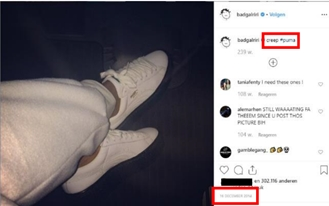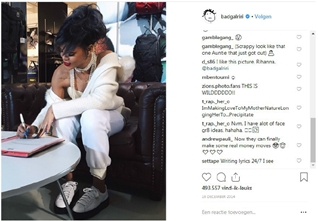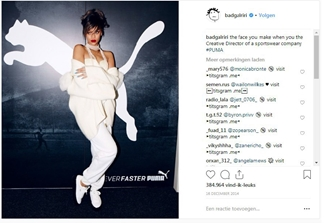How did Rihanna invalidate an RCD?
- Rosie Burbidge

- Mar 28, 2024
- 3 min read

The EU General Court has upheld a finding that a Registered Community Design (RCD) for shoes (pictured) belonging to Puma lacked individual character on the basis of designs disclosed by the singer Rihanna in photographs posted on social media and elsewhere.
Rihanna was appointed creative director of Puma on 16 December 2014. On the same day, she posted photos on Instagram showing white shoes with a thick black sole. Similar photos were also published in various media and on a fan website on the following day.
Puma applied for an RCD in relation to these shoes on 26 July 2016. The application for a declaration was filed on 22 July 2019, granted on 19 March 2021 and upheld by the Board of Appeal on 11 August 2022.

Admissibility
The Court rejected Puma’s argument that the application was inadmissible as it violated a settlement agreement following court proceedings in the Netherlands. It said the assessment of individual character was objective and in any case the settlement did not intend to bar an application for a declaration of invalidity.
Disclosure
Puma argued that the photos were either of insufficient quality or inauthentic. The Court said disclosure requires a two-stage analysis: (1) does the evidence show disclosure of a design before the priority date? (2) if that is disputed, could those facts reasonably become known in the specialised circles in the EU?
It added that disclosure must be proved by “solid and objective evidence”.
Puma argued that the photos posted on Instagram were dark and blurred but the Court said they were “of sufficient quality to allow all the features of the prior design to be recognised”.
Even if the images focused on Rihanna rather than the shoes, it was still possible to perceive the overwhelming majority of the elements making up the shoes.
The perception of the features of the designs was immediate and did not depend on later knowledge of the design.
Finally, not all views of the prior design were visible and it was not relevant that Instagram is mainly viewed on mobile phones and the details in the photos could only be seen by zooming in.
The Court added it was likely that many people would have viewed the photos:
“Simply on account of the fact that, in December 2014, Rihanna was a world-famous pop star, it should be observed that both her fans and the circles specialised in the fashion sector had, at that time, developed a particular interest in the shoes that she wore on the day on which the contract under which the star became the applicant’s creative director was signed. That being the case, it is perfectly reasonable to take the view that a not insignificant proportion of the people who were interested in music or in Rihanna herself, including her clothing, in December 2014 viewed the photos in question closely in order to discern from those photos the appearance of the shoes that the star wore, thus recognising the features of the prior design.”
What does this mean?
Registered design protection can be a valuable tool in the fashion industry but, as this case illustrates, registrations can easily be undermined by earlier disclosure – including by the applicant itself or its employees/representatives.
Puma tried to escape from the net it found itself in by arguing that the images were of insufficient quality for people to recognise the shoe designs. But this decision suggests that tribunals and courts are well aware that users can take screenshots and zoom in to identify design features.
Designers should take steps to avoid disclosing their designs in any media, and if there is disclosure then to ensure they file an RCD application within the priority period. If you require specific advice, please contact us.
To find out more about the issues raised in this blog contact Rosie Burbidge, Intellectual Property Partner at Gunnercooke LLP in London - rosie.burbidge@gunnercooke.com
#registereddesign #EU #communitydesign #designrights #disclosure #invalidity #Puma #EU #designs #priorityperiod






